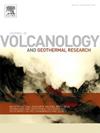The fatal 9th December 2019 eruption disaster on Whakaari/White Island volcano, New Zealand: Contributing factors, failures, and lessons for volcano tourism
IF 2.3
3区 地球科学
Q2 GEOSCIENCES, MULTIDISCIPLINARY
Journal of Volcanology and Geothermal Research
Pub Date : 2025-10-01
DOI:10.1016/j.jvolgeores.2025.108461
引用次数: 0
Abstract
The eruption of Whakaari/White Island volcano in New Zealand on 9th December 2019 resulted in 22 deaths of tourists and tour guides and 22 seriously injured survivors. The key factors that contributed to the disaster were the dangerous, unpredictable and frequently explosive state of the volcano, the very active hydrothermal system under the crater, its eruption phenomena, the remote oceanic setting, allowing tourists and tour guides to go into the amphitheatre-like crater right up to the active vent, totally inadequate information for tourists on how dangerous and potentially deadly the volcano could be, and the procedural and regulatory failures of many organisations that should have ensured that volcano tourism was conducted and managed in a responsible and safe way. These include the volcanological monitoring agency GNS, national WorkSafe New Zealand, national and regional emergency response authorities, including police and defence forces, national and regional tourism organisations, adventure tourism companies, and indirectly even the national public liability insurance organisation. This overview of what went wrong highlights that even in developed countries, failure to enforce safety regulations embedded in national laws, a catastrophic failure in communication between organisations, conflicts of interest, and the consideration of economic impacts on tourism in decision making during volcanic crises can lead to disasters in volcano tourism. The disaster reveals important lessons for volcano tourism both in New Zealand and globally.
2019年12月9日新西兰瓦卡里/怀特岛火山致命的喷发灾难:火山旅游的因素、失败和教训
2019年12月9日,新西兰瓦卡里/怀特岛火山爆发,造成22名游客和导游死亡,22名幸存者受重伤。造成这场灾难的关键因素是火山的危险、不可预测和经常爆发的状态,火山口下非常活跃的热液系统,它的喷发现象,遥远的海洋环境,允许游客和导游进入圆形剧场般的火山口,一直到活跃的喷口,游客完全不了解火山的危险和潜在的致命程度。许多组织在程序和监管方面的失误,本应确保火山旅游以负责任和安全的方式进行和管理。这些机构包括火山监测机构GNS、国家工作安全新西兰、国家和地区应急当局,包括警察和国防部队、国家和地区旅游组织、冒险旅游公司,甚至间接地包括国家公共责任保险组织。本文对问题的概述强调,即使在发达国家,在火山危机期间,未能执行嵌入国家法律的安全法规,组织之间沟通的灾难性失败,利益冲突以及在决策中考虑对旅游业的经济影响,都可能导致火山旅游业的灾难。这场灾难为新西兰乃至全球的火山旅游提供了重要的教训。
本文章由计算机程序翻译,如有差异,请以英文原文为准。
求助全文
约1分钟内获得全文
求助全文
来源期刊
CiteScore
5.90
自引率
13.80%
发文量
183
审稿时长
19.7 weeks
期刊介绍:
An international research journal with focus on volcanic and geothermal processes and their impact on the environment and society.
Submission of papers covering the following aspects of volcanology and geothermal research are encouraged:
(1) Geological aspects of volcanic systems: volcano stratigraphy, structure and tectonic influence; eruptive history; evolution of volcanic landforms; eruption style and progress; dispersal patterns of lava and ash; analysis of real-time eruption observations.
(2) Geochemical and petrological aspects of volcanic rocks: magma genesis and evolution; crystallization; volatile compositions, solubility, and degassing; volcanic petrography and textural analysis.
(3) Hydrology, geochemistry and measurement of volcanic and hydrothermal fluids: volcanic gas emissions; fumaroles and springs; crater lakes; hydrothermal mineralization.
(4) Geophysical aspects of volcanic systems: physical properties of volcanic rocks and magmas; heat flow studies; volcano seismology, geodesy and remote sensing.
(5) Computational modeling and experimental simulation of magmatic and hydrothermal processes: eruption dynamics; magma transport and storage; plume dynamics and ash dispersal; lava flow dynamics; hydrothermal fluid flow; thermodynamics of aqueous fluids and melts.
(6) Volcano hazard and risk research: hazard zonation methodology, development of forecasting tools; assessment techniques for vulnerability and impact.

 求助内容:
求助内容: 应助结果提醒方式:
应助结果提醒方式:


